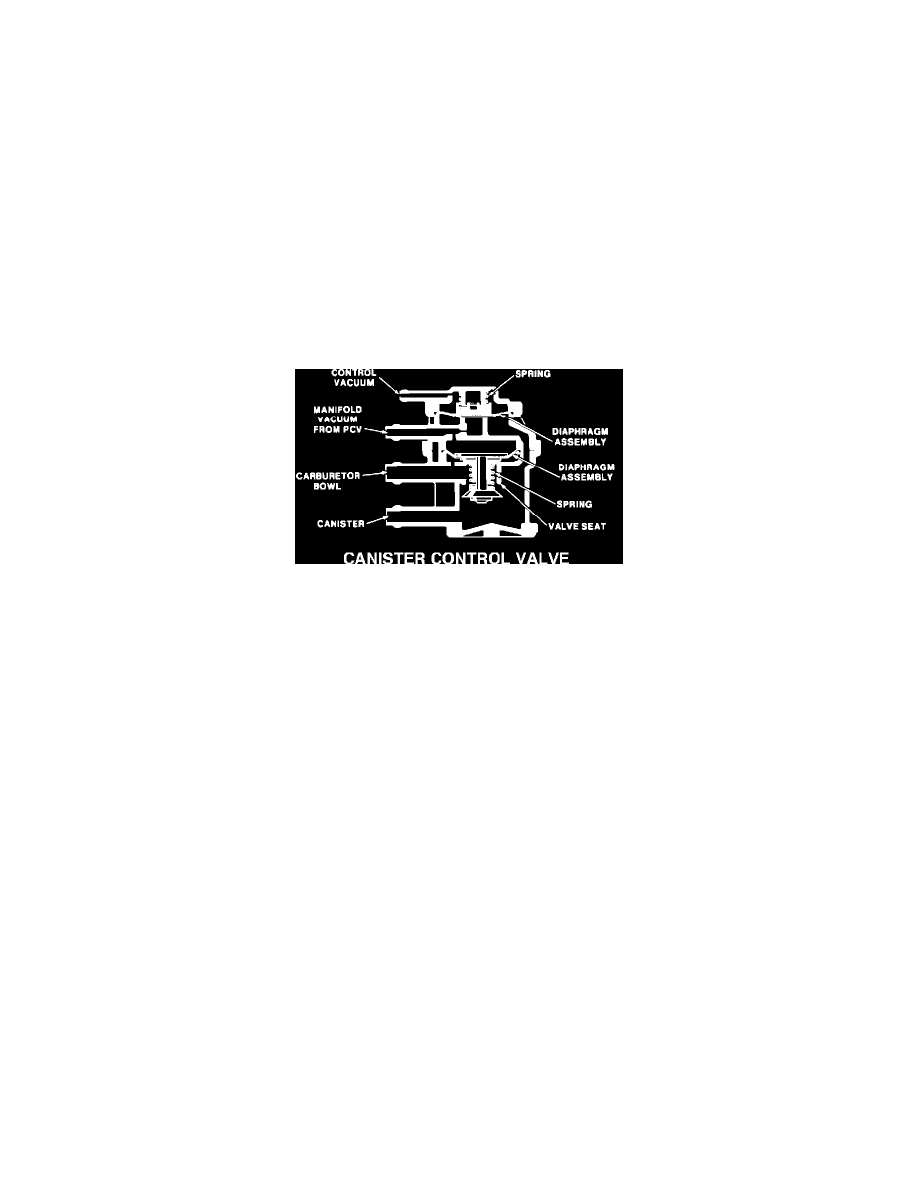Chevelle/Malibu V8-305 5.0L (1983)

Canister Purge Control Valve: Customer Interest
Engine - Rough/Lean Idle/Rich Acceleration
Number:
84-124
Section:
6E (VIt)
Date:
May, 1984
Subject:
REVISED TESTING PROCEDURE FOR CANNISTER CONTROL VALVE
Model and Year:
1982-84 CAPRICE, CAMARO, MONTE CARLO, AND MALIBU WITH EITHER 3.8L V6, 4.4L V8, 5.0L V8 OR 5.7L V8
TO:
ALL CHEVROLET DEALERS
This bulletin superseded 83-I-29 issued in December, 1982.
When diagnosing a condition such as rough idle, rich acceleration, or lean idle duty cycles (indications of rich carburetion), the following procedure
should be followed for diagnosis of a canister control valve:
NOTICE:
The canister control valve must be removed from the vehicle to perform this test.
Canister Control Valve
1.
Apply a short length of 3/8" (9.5 mm) I.D. hose to the carburetor bowl tube of the canister control valve (see illustration) and blow into it. Air
should pass out through the canister tube. If it does not, replace the canister control valve.
2.
Use a hand vacuum pump to apply vacuum (15" Hg or 51 kPa) to the PCV tube. The diaphragm should hold vacuum for at least twenty (20)
seconds. If it does not, replace the canister control valve.
3.
With vacuum still applied, again try to blow through the hose into the carburetor bowl tube. No air should flow from the canister tube. If it does,
the lower valve assembly is not sealing correctly, and the canister control valve must be replaced.
4.
Remove the short hose from the carburetor bowl tube, and install it on the canister tube. Move hand vacuum pump to apply vacuum (15" Hg or 51
kPa), to the control vacuum tube, permitting vacuum to raise the upper diaphragm. The diaphragm should hold the
vacuum for at least twenty (20) seconds. If it does not, replace the canister control valve. Seal the carburetor bowl tube with a rubber cap or finger, and
while vacuum is still being applied to the control vacuum tube, try to blow through the hose connected to the canister tube. Air should pass freely from
the PCV tube. If not, the canister control valve must be replaced.
